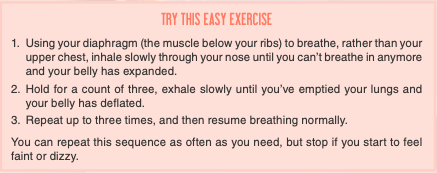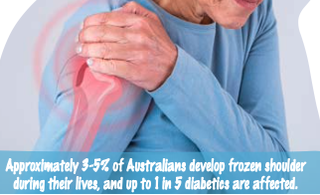Are you feeling stressed, lonely or sad? Don't be surprised if you become ill. Research has shown that our state of mind affects our health.Our lives today can be filled with stressors such as financial worries, relationship problems, work issues, loneliness and health concerns. Even positive events such as moving house or a new baby can contribute to stress.
HOW DOES STRESS AFFECT OUR BODIES? Our minds and bodies are closely linked, meaning that mental stress leads to physical symptoms. For example, when we feel overwhelmed or threatened; our heart rate increases, muscles tense up and breathing becomes fast and shallow. This is part of what’s known as our ‘stress response’ – our body’s natural survival mechanism which allows us to remain alert and fight an imminent threat. The trouble is that this reaction is only meant to be temporary; when it’s prolonged (chronic), it can have a negative effect on our health. Chronic stress can actually contribute to serious conditions like heart disease, disorders of the digestive system, and mental illness. It can affect our immune system, making us susceptible to all kinds of bacteria and viruses. It’s a nasty cycle; stress makes us ill, and illness makes us stressed. HOW CAN WE HELP OURSELVES? Years of research now indicates that we can change the way stress affects us. One study, which monitored students doing days of important exams, found that their immune response became weaker each day. However, when they began to practise stress relieving techniques consistently, their immune system function significantly improved. There are many ways to relieve stress and practise mindfulness – from practical activities such as listening to music, reading, exercise, and hobbies – to learning strategies such as mindfulness and meditation. Even changing the way you breathe can improve your mood and counteract stress. We can’t avoid external stressors, but we can manage how we react and cope with these. Simple stress-management techniques can have a positive effect on our immune system and health in general.
0 Comments
23/6/2021 0 Comments Taking care of your hamstringsHamstring injuries are not just for those that participate in sports.It’s likely you’ve heard of a pulled hamstring. Maybe you’ve watched as your favourite sports player suddenly stopped, grasping the back of their thigh. You might have experienced it yourself or know someone who’s been struck by this troublesome injury. You may not realise the importance of hamstrings until you injure them.
WHAT ARE THE HAMSTRINGS AND WHAT DO THEY DO? Your hamstrings are formed by a mighty trio of muscles: the biceps femoris, semimembranosus, and semitendinosus. Together, they create a powerful muscular unit. Each one starts at what we often call our “sit bones” and runs down the back of our thigh, crossing near our hip and knee and ending in our lower leg. Where they attach determine what actions they trigger, but in general they play a crucial role in walking, running and jumping. HOW CAN YOU PROTECT AGAINST INJURY? Tight hamstrings can affect all of these movements and limit mobility. Having flexible, lengthened hamstrings supports the knee, hip, and spine. The stretch that’s best for you depends on your body and its ability; but here’s a stretch you can do from a chair which is often recommended. SEATED HAMSTRING STRETCH
Picture from Pinterest 23/6/2021 0 Comments Are you getting enough vitamin D?Now that we’re in the middle of winter it might be time to think about your vitamin D intake. Vitamin D is an essential micronutrient – one of its most important functions is to help grow and maintain strong bones and teeth. Some research has shown that vitamin D can also help our immunity and reduce depression.WHAT AFFECTS VITAMIN D LEVELS?
Some foods contain vitamin D, particularly oily fish and dairy products, but we’re generally unable to meet our recommended intake through diet alone. We produce vitamin D in our skin when we’re exposed to sunlight and can usually get enough from a small amount – however this is dependent on a number of factors.
SYMPTOMS OF VITAMIN D DEFICIENCY Vitamin D deficiency causes thinning of the bone structure – increasing the risk of falls and fractures in adults. People with vitamin D deficiency often suffer from bone, joint and muscle pain or weakness. Other symptoms can include: fatigue, depression, thinning hair, lowered immunity to colds and flu. CAN WE HAVE TOO MUCH VITAMIN D? It’s nearly impossible to have too much naturally-occurring vitamin D; however, it is possible if you take vitamin D supplements in excess. Very high vitamin D levels can cause kidney damage and dangerous heart issues. Only take the recommended dose for your needs. Also, remember to take a balanced approach to sun exposure– take care to avoid the risk of any sun damage to your skin. Walking is usually great for wellbeing. But what if it makes your back ache? If even the act of standing triggers increased discomfort, what could be wrong?When these two simple actions hurt, it’s more challenging to keep mobile. Over time, this may result in loss of muscle strength, spinal motion, function and flexibility. You guess correctly, this can then make your pain worse.
WHAT COULD BE CAUSING YOUR PAIN, AND WHAT CAN YOU DO ABOUT IT? There are many structures in your back that can cause pain which is made worse by walking and prolonged standing; these include muscles, tendons, ligaments, nerves, bones, and joints. When we stand, the discs and vertebrae become compressed. If you have a herniated disc, the pressure of weight bearing can push the damaged disc onto a nearby nerve and cause back pain. This can also happen with a condition called lumbar spinal stenosis. Stenosis means narrowing. In this condition a narrowing of the spinal canal occurs. This can result in too little space for the spinal cord and its nerves. Then there is our posture. The gentle natural curves of our spine support stress from movement and gravity, and help us stand upright. If these curves are too pronounced your posture is affected, which can increase pressure on your spine, particularly when standing for long periods. In turn this can affect your muscles, discs, joints, and nerves; causing pain. If you’re overweight or obese, walking can increase the risk of back pain from strain on the muscles − especially those that support the lower back. With all of this in mind, how can you find relief? To open a lock, you need the right key. So it is with treatment. To fix a problem, you need to first identify the cause. Your chiropractor may use a variety of evaluation tools. Your history, including any trauma, physical examination, chiropractic assessments, and scans might be needed. Once the cause of your pain is determined, the right treatment can be recommended. 23/6/2021 0 Comments Frozen shoulders can thawIs your shoulder painful, and are you experiencing stiffness and disability which has worsened over time? Have you been diagnosed with a frozen shoulder?Frozen shoulder, also known as adhesive capsulitis, is common. It tends to strike between the ages of 40–60 years, more so in women and people with certain underlying illness. And it can hurt! While sharp pain is experienced with extremes of motion, the usual pain is described as dull and aching.
WHAT IS FROZEN SHOULDER AND HOW DOES IT PROGRESS? Our shoulder joint is the most mobile joint in our body. Thanks to its ball and socket design, it can move forward and backward, in and out, and rotate in either direction. This provides incredible mobility. A flexible capsule surrounds the joint and holds in a lubricant called the synovial fluid. As with the engine of a car, the lubricant allows frictionless motion, reduces wear and tear, and is key to optimal function. Frozen shoulder occurs when this capsule around the shoulder joint thickens and tightens, restricting its movement and lubrication. Your shoulder starts to "stick", and pain increases while mobility decreases. This happens in stages:
WHY DOES IT HAPPEN? While there are accepted stages, a cause often remains elusive. Diabetes, heart disease, thyroid conditions, and Parkinson's disease increase the risk. It may develop after a fall or injury, or if you’re unable to move your arm, such as being in a sling or following stroke or mastectomy. Not using it may be a greater problem than overuse. This makes healthy use — and a healthy life — important for possible prevention and recovery. WHAT SHOULD I DO ABOUT IT? If you have been diagnosed with frozen shoulder, it's important to understand its natural progression; how long it will take to recuperate. Recovery can take several years, so a tailored treatment plan is essential. With this in mind, what approaches will work? Adjustments may reduce pain and improve function, and exercises and stretches that encourage motion of this joint may help. However, your chiropractor will assess and determine the most effective form of care for you. This will depend on your stage, your pain level, and the assessment findings. With the right approach, dedication and appropriate care, it’s possible to find relief and help recovery. 16/6/2021 0 Comments BEING GRATEFULAt times when things aren’t going well, it can be extremely difficult to feel grateful. However, being able to do so can actually enable you to cope better with the situation. Your outlook on life and the thoughts that go through your head can have a significant impact on both your psychological and physical well-being.
There is a complex relationship between thoughts, moods, brain chemistry, and the functioning of other systems in our bodies. This relationship means thoughts can actually trigger physiological changes in our body that affect our mental and physical health. Essentially, what you think affects how you feel (both emotionally and physically). It has been suggested that if you increase your positive thoughts, like gratitude, you may increase your subjective sense of well- being as well as, possibly, improving objective measures of physical health (like fewer symptoms of illness). As the study of happiness and emotional well-being gains popularity in psychological and scientific study, there is increasing research on the nature of gratitude, its causes, and its potential consequences for health and mental/emotional well-being. Being grateful allows you to capture the full essence of every moment. It can ease the burden of life while adding a dimension of beauty, and allow you to find contentment even in moments of crisis. Take the time today to reflect on the things you are grateful for and enjoy the positivity it brings to your life. |
AuthorAdam's Back is a team of dedicated complimentary health professionals. Our aim is to support you in finding drug-free solutions for better health. Archives
July 2024
Categories |
Search by typing & pressing enter







 RSS Feed
RSS Feed